Abstract
Anticonvulsants cause dyskinesias more commonly than has been appreciated. Diphenylhydantoin (DPH), carbamazepine, primidone, and phenobarbitone may cause asterixis. DPH, but not other anticonvulsants, may cause orofacial dyskinesias, limb chorea, and dystonia in intoxicated patients. These dyskinesias are similar to those caused by neuroleptic drugs and may be related to dopamine antagonistic properties possessed by DPH.
Full text
PDF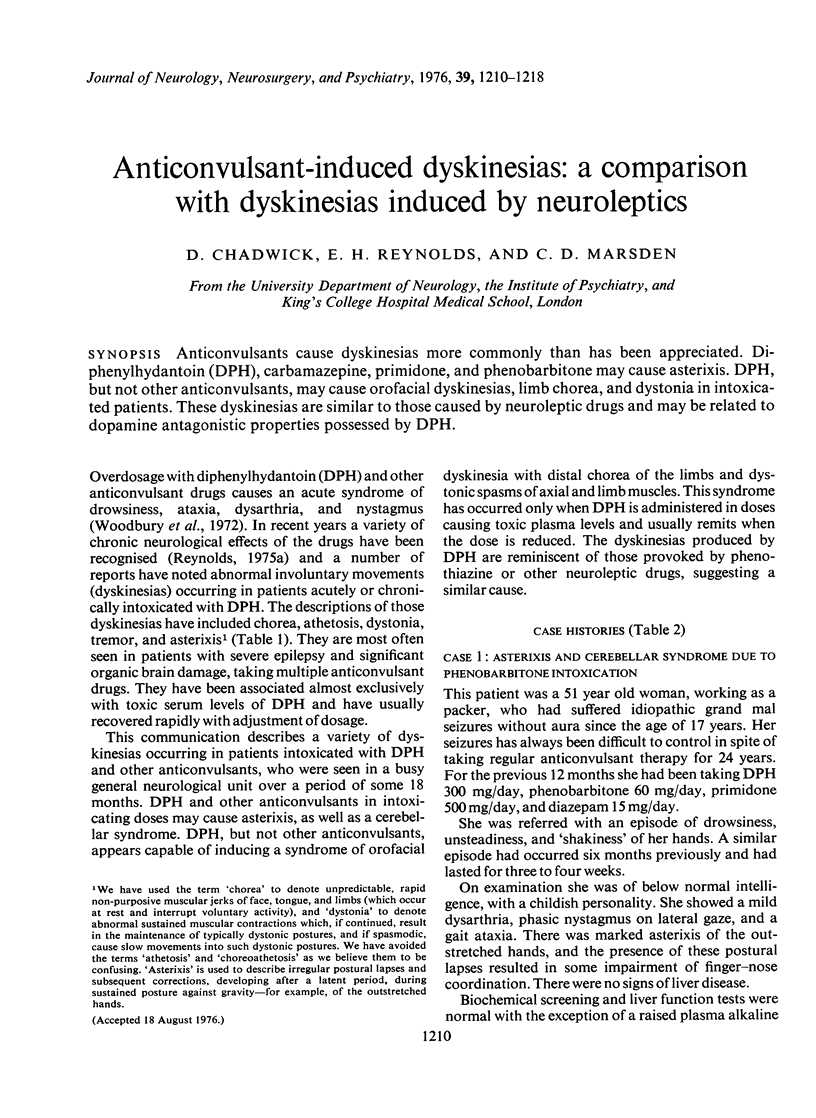
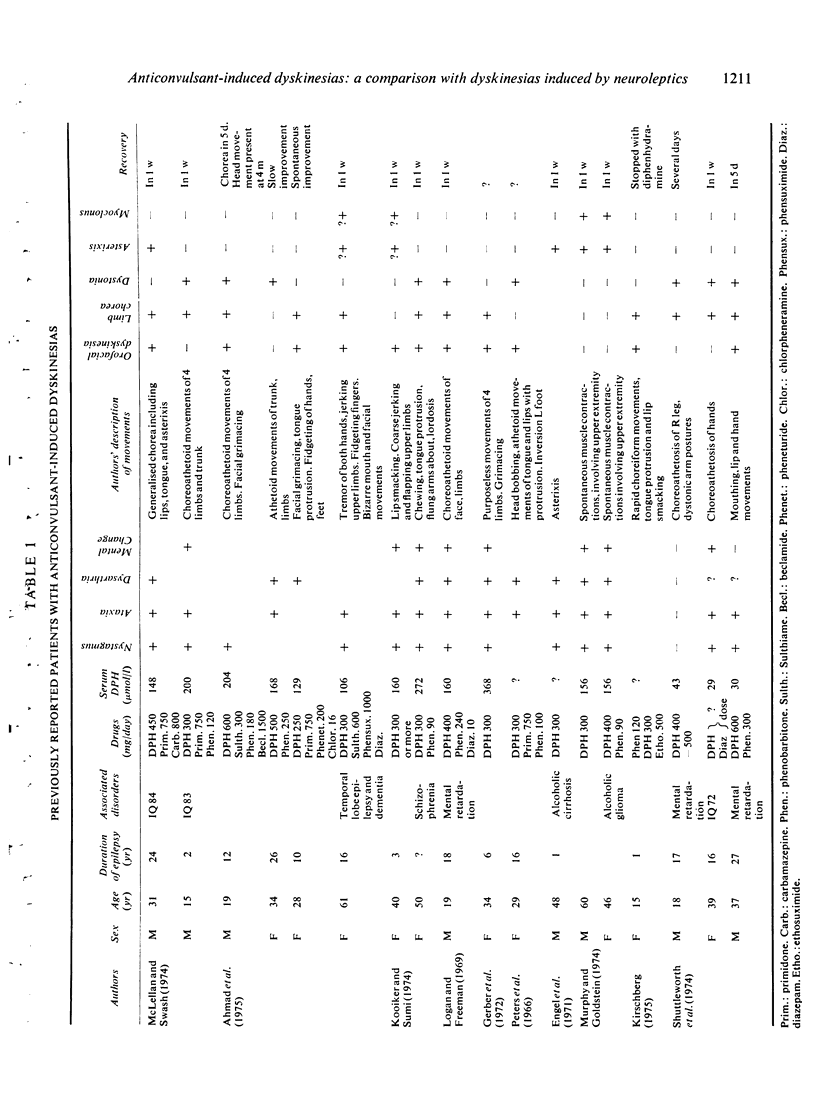
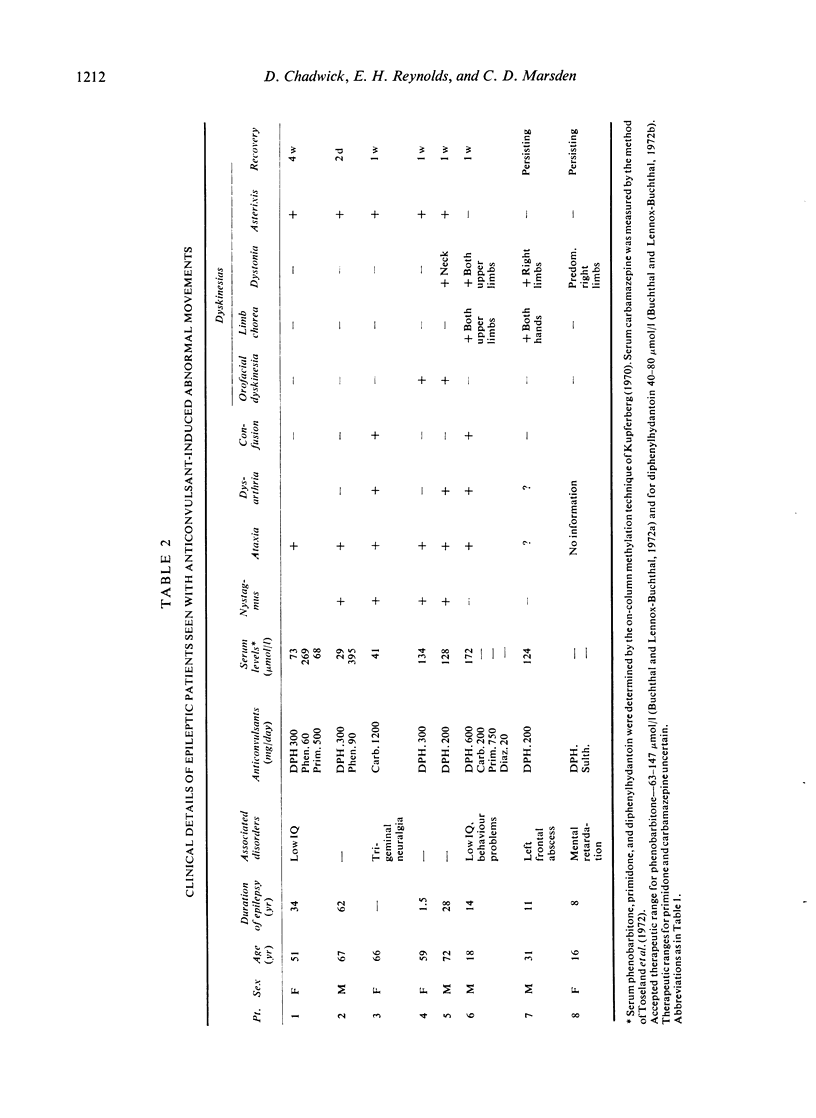
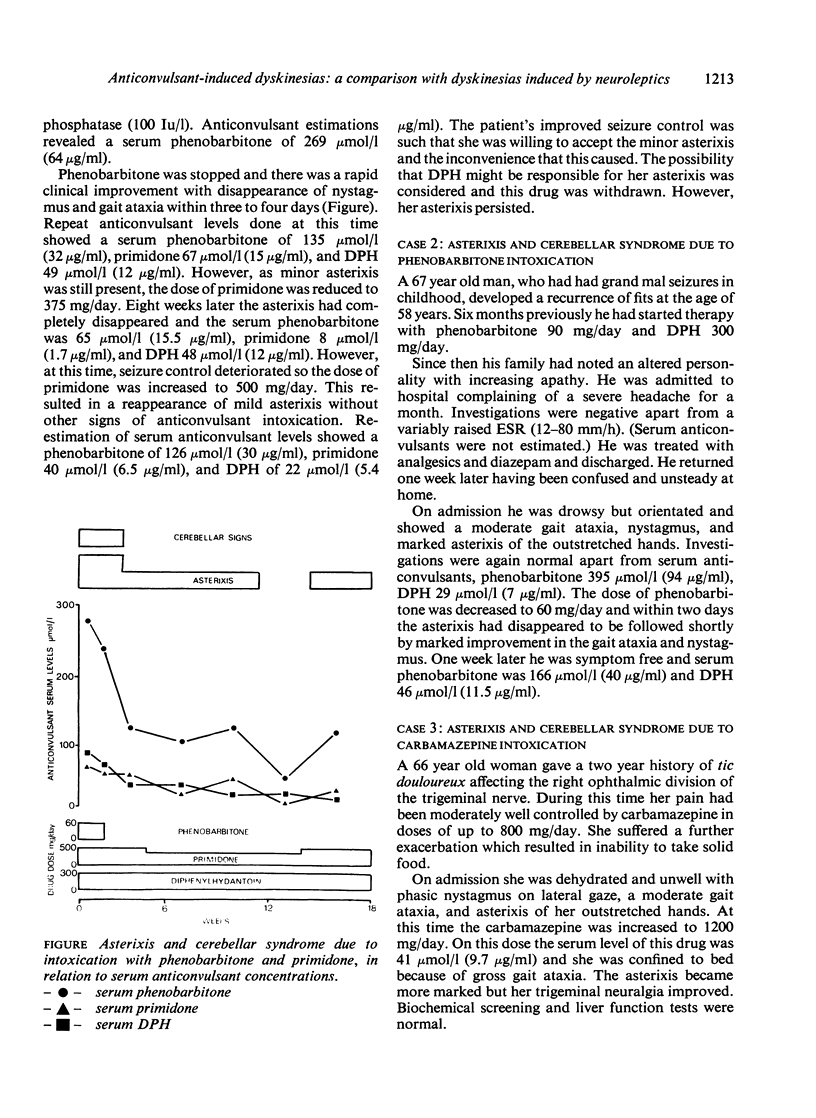
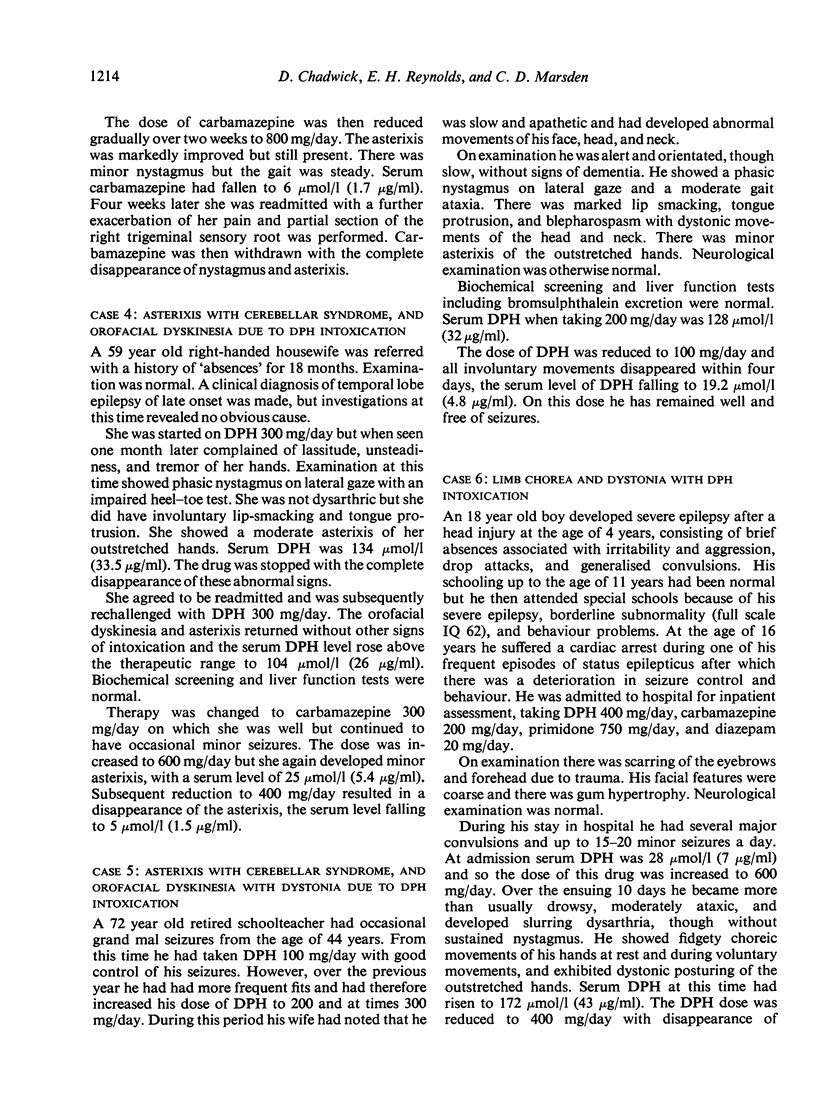
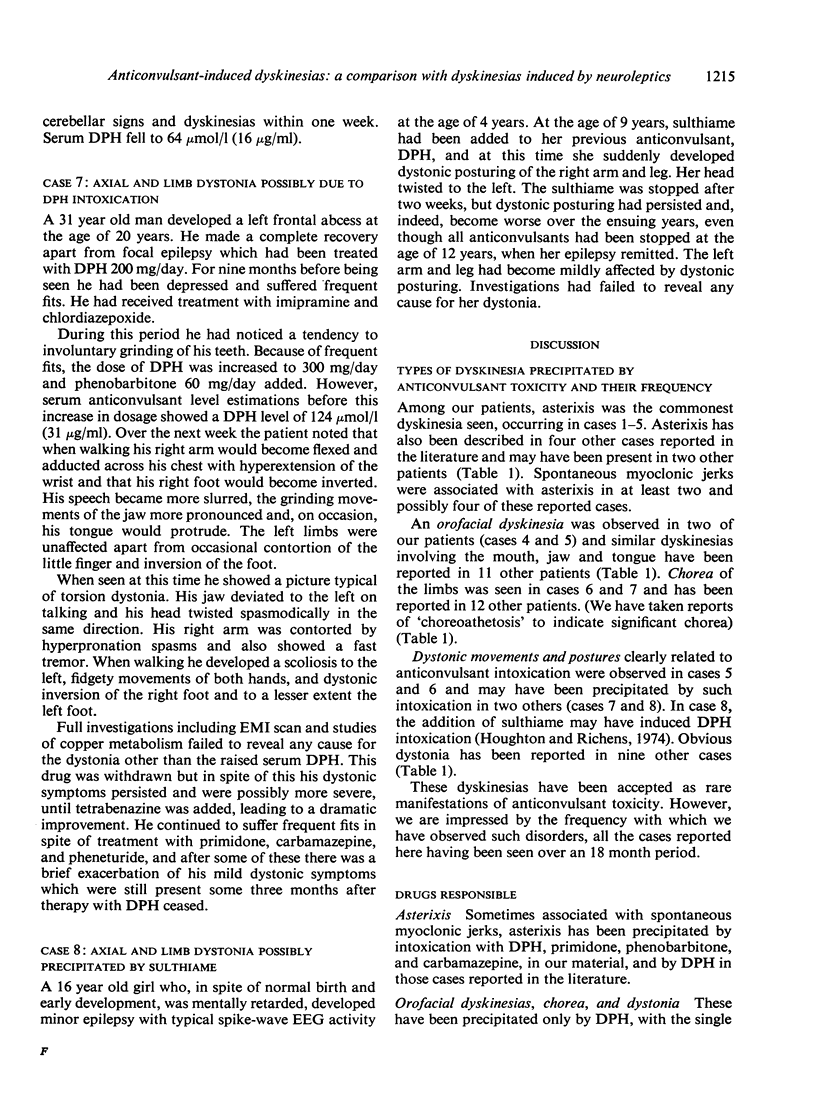
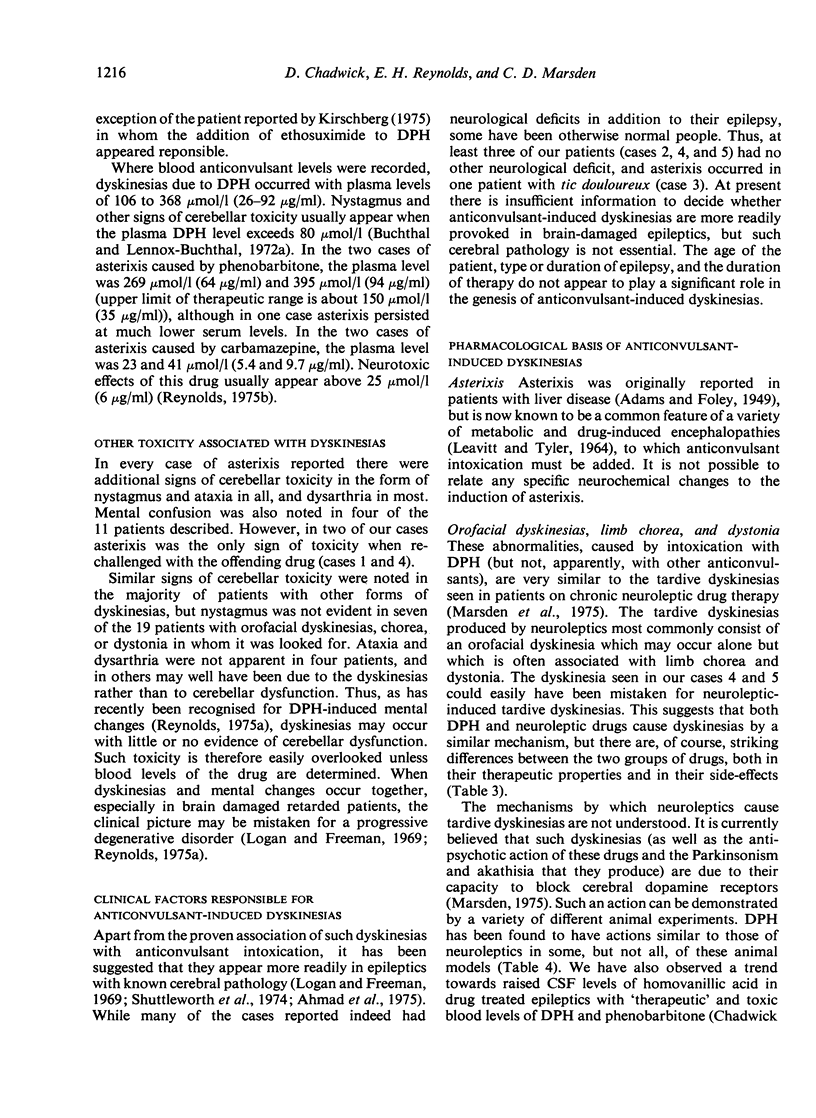
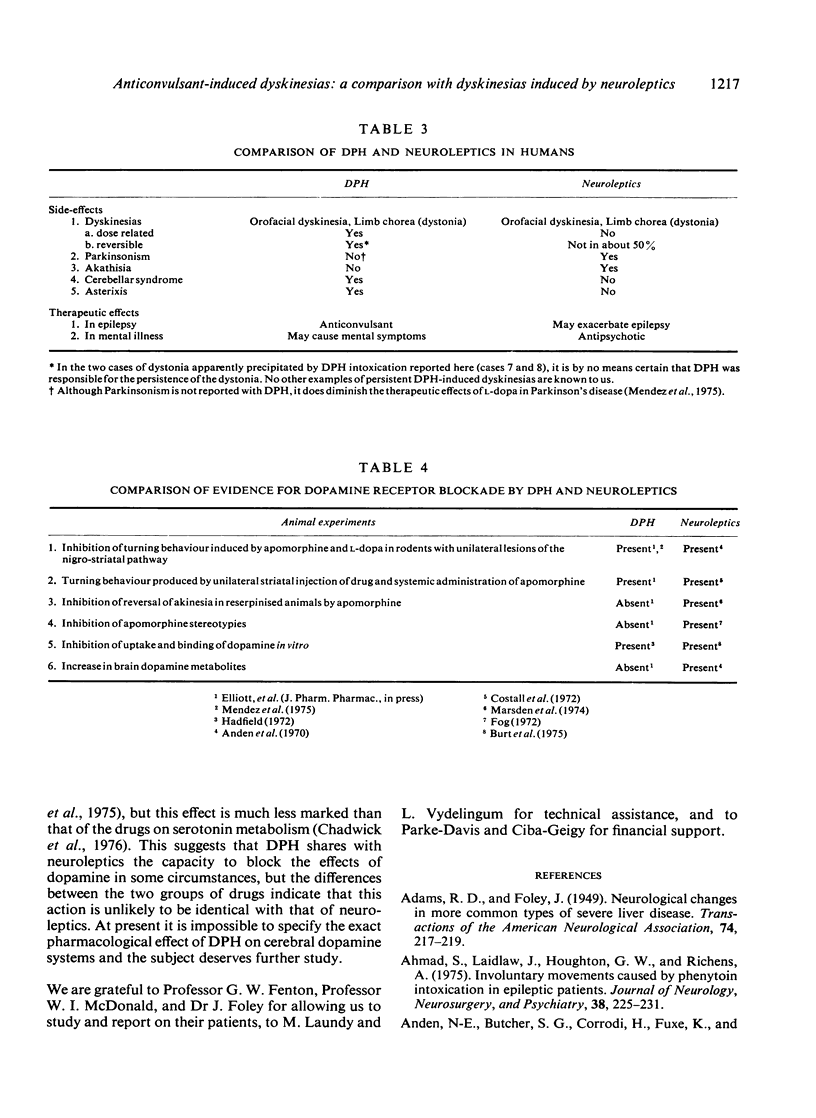
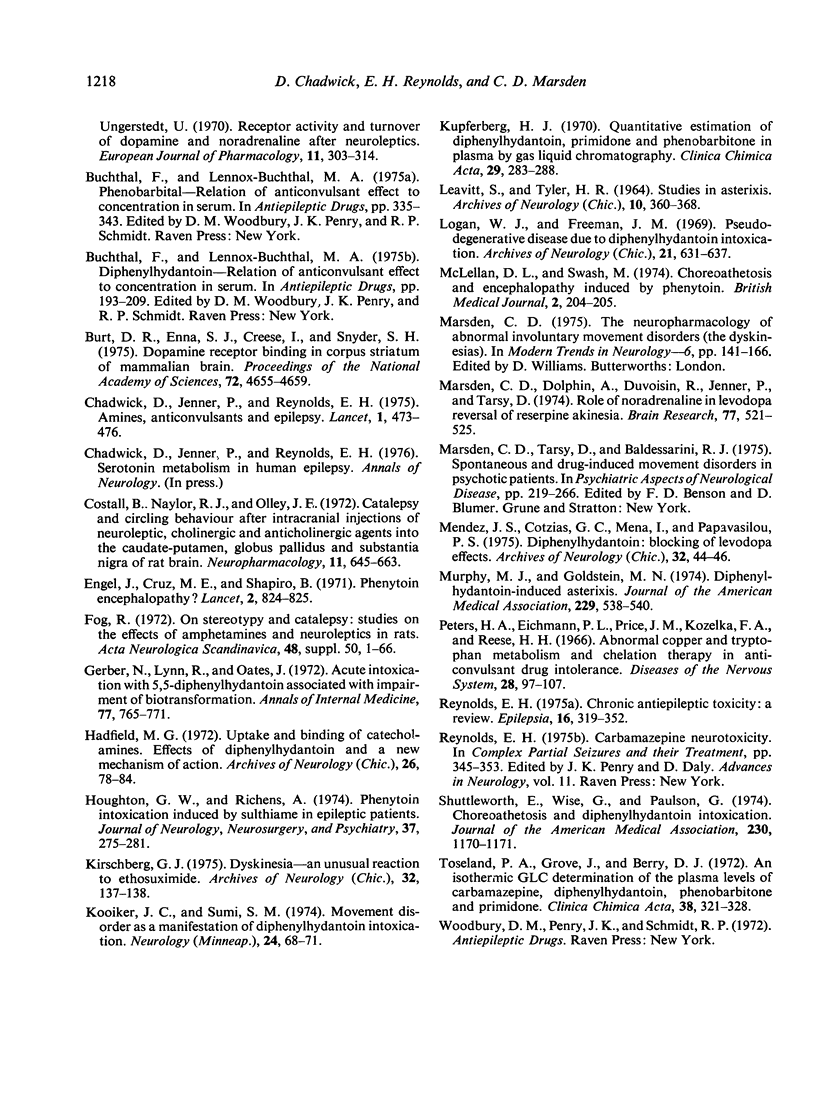
Selected References
These references are in PubMed. This may not be the complete list of references from this article.
- Ahmad S., Laidlaw J., Houghton G. W., Richens A. Involuntary movements caused by phenytoin intoxication in epileptic patients. J Neurol Neurosurg Psychiatry. 1975 Mar;38(3):225–231. doi: 10.1136/jnnp.38.3.225. [DOI] [PMC free article] [PubMed] [Google Scholar]
- Andén N. E., Butcher S. G., Corrodi H., Fuxe K., Ungerstedt U. Receptor activity and turnover of dopamine and noradrenaline after neuroleptics. Eur J Pharmacol. 1970;11(3):303–314. doi: 10.1016/0014-2999(70)90006-3. [DOI] [PubMed] [Google Scholar]
- Burt D. R., Enna S. J., Creese I., Snyder S. H. Dopamine receptor binding in the corpus striatum of mammalian brain. Proc Natl Acad Sci U S A. 1975 Nov;72(11):4655–4659. doi: 10.1073/pnas.72.11.4655. [DOI] [PMC free article] [PubMed] [Google Scholar]
- Chadwick D., Jenner P., Reynolds E. H. Amines, anticonvulsants, and epilepsy. Lancet. 1975 Mar 1;1(7905):473–476. doi: 10.1016/s0140-6736(75)92827-5. [DOI] [PubMed] [Google Scholar]
- Costall B., Naylor R. J., Olley J. E. Catalepsy and circling behaviour after intracerebral injections of neuroleptic, cholinergic and anticholinergic agents into the caudate-putamen, globus pallidus and substantia nigra of rat brain. Neuropharmacology. 1972 Sep;11(5):645–663. doi: 10.1016/0028-3908(72)90073-1. [DOI] [PubMed] [Google Scholar]
- Engel, Cruz M. E., Shapiro B. Phenytoin encephalopathy? Lancet. 1971 Oct 9;2(7728):824–825. doi: 10.1016/s0140-6736(71)92787-5. [DOI] [PubMed] [Google Scholar]
- Gerber N., Lynn R., Oates J. Acute intoxication with 5,5-diphenylhydantoin (Dilantin) associated with impairment of biotransformation. Plasma levels and urinary metabolites; and studies in healthy volunteers. Ann Intern Med. 1972 Nov;77(5):765–771. doi: 10.7326/0003-4819-77-5-765. [DOI] [PubMed] [Google Scholar]
- Hadfield M. G. Uptake and binding of catecholamines. Effect of diphenylhydantoin and a new mechanism of action. Arch Neurol. 1972 Jan;26(1):78–84. doi: 10.1001/archneur.1972.00490070096012. [DOI] [PubMed] [Google Scholar]
- Houghton G. W., Richens A. Phenytoin intoxication induced by sulthiame in epileptic patients. J Neurol Neurosurg Psychiatry. 1974 Mar;37(3):275–281. doi: 10.1136/jnnp.37.3.275. [DOI] [PMC free article] [PubMed] [Google Scholar]
- Kirschberg G. J. Dyskinesia-an unusual reaction to ethosuximide. Arch Neurol. 1975 Feb;32(2):137–138. doi: 10.1001/archneur.1975.00490440087017. [DOI] [PubMed] [Google Scholar]
- Kooiker J. C., Sumi S. M. Movement disorder as a manifestation of diphenylhydantoin intoxication. Neurology. 1974 Jan;24(1):68–71. doi: 10.1212/wnl.24.1.68. [DOI] [PubMed] [Google Scholar]
- Kupferberg H. J. Quantitative estimation of diphenylhydantoin, primidone and phenobarbital in plasma by gas-liquid chromatography. Clin Chim Acta. 1970 Aug;29(2):282–288. doi: 10.1016/0009-8981(70)90048-3. [DOI] [PubMed] [Google Scholar]
- LEAVITT S., TYLER H. R. STUDIES IN ASTERIXIS. I. Arch Neurol. 1964 Apr;10:360–368. doi: 10.1001/archneur.1964.00460160030002. [DOI] [PubMed] [Google Scholar]
- Logan W. J., Freeman J. M. Pseudodegenerative disease due to diphenylhydantoin intoxication. Arch Neurol. 1969 Dec;21(6):631–637. doi: 10.1001/archneur.1969.00480180087008. [DOI] [PubMed] [Google Scholar]
- Marsden C. D., Dolphin A., Duvoisin R. C., Jenner P., Tarsy D. Role of noradrenaline in levodopa reversal of reserpine akinesia. Brain Res. 1974 Sep 13;77(3):521–525. doi: 10.1016/0006-8993(74)90643-x. [DOI] [PubMed] [Google Scholar]
- Marsden C. D. The neuropharmacology of abnormal involuntary movement disorders (the dyskinesias). Mod Trends Neurol. 1975;6:141–166. [PubMed] [Google Scholar]
- McLellan D. L., Swash M. Choreo-athetosis and encephalopathy induced by phenytoin. Br Med J. 1974 Apr 27;2(5912):204–205. doi: 10.1136/bmj.2.5912.204. [DOI] [PMC free article] [PubMed] [Google Scholar]
- Mendez J. S., Cotzias G. C., Mena I., Papavasiliou P. S. Diphenylhydantoin. Blocking of levodopa effects. Arch Neurol. 1975 Jan;32(1):44–46. doi: 10.1001/archneur.1975.00490430066011. [DOI] [PubMed] [Google Scholar]
- Murphy M. J., Goldstein M. N. Diphenylhydantoin-induced asterixis. A clinical study. JAMA. 1974 Jul 29;229(5):538–540. [PubMed] [Google Scholar]
- Peters H. A., Eichman P. L., Price J. M., Kozelka F. L., Reese H. H. Abnormal copper and tryptophan metabolism and chelation therapy in anticonvulsant drug intolerance. Dis Nerv Syst. 1966 Feb;27(2):97–107. [PubMed] [Google Scholar]
- Reynolds E. H. Chronic antiepileptic toxicity: a review. Epilepsia. 1975 Jun;16(2):319–352. doi: 10.1111/j.1528-1157.1975.tb06062.x. [DOI] [PubMed] [Google Scholar]
- Shuttleworth E., Wise G., Paulson G. Choreoathetosis and diphenylhydantoin intoxication. JAMA. 1974 Nov 25;230(8):1170–1171. [PubMed] [Google Scholar]
- Toseland P. A., Grove J., Berry D. J. An isothermal GLC determination of the plasma levels of carbamazepine, diphenylhydantoin, phenobarbitone and primidone. Clin Chim Acta. 1972 May;38(2):321–328. doi: 10.1016/0009-8981(72)90122-2. [DOI] [PubMed] [Google Scholar]


